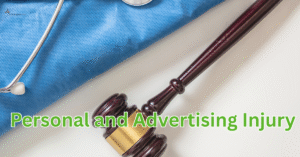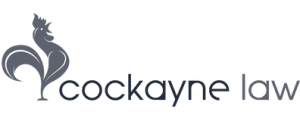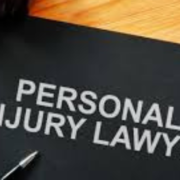Personal & Advertising Injury Coverage Made Simple for Utah Businesses

Running a business in Utah is rewarding, yet one heated social media post or poorly worded radio ad can lead to a lawsuit that halts cash flow overnight. Many owners think insurance only pays when someone slips on a wet floor. In reality, your commercial general liability (CGL) policy also shields you from claims that say you hurt someone’s name, broke their privacy, or copied their slogan.
The part of the policy that does that work is called “personal and advertising injury.” Knowing its function, however, could save time, money, and sleepless nights, especially among small shops and growing tech outfits that depend on local goodwill.
This guide is a plain English explanation of the rules, and a way to empower yourself to spot holes, shoot the breeze with your agent, and if you get a demand, act speedily.
Key Points You Should Know
- Coverage pays defense plus judgments
- Applies to non-bodily, reputational harm
- Common triggers include libel and false ads
- Policy language uses a specific “offenses” list
- Some online actions reach worldwide courts
- Exclusions remove intentional wrongs and fines
- Prompt notice to the insurer protects your rights
- Defense counsel is usually chosen by the carrier
What Are Personal and Advertising Injuries?
“Personal injury” in insurance lingo does not mean broken bones. It refers to certain civil wrongs that hurt a person’s dignity or rights without physical contact. “Advertising injury” covers similar wrongs that arise while you promote goods or services. Insurance companies bundle them because the harm often overlaps and stems from speech.
Typical Offenses
- Libel – written false statements that damage reputation
- Slander – spoken false statements with a similar effect
- Publication of material that violates privacy
- Wrongful eviction or entry that invades the right of private occupancy
- Use of another’s advertising idea, slogan, or trade dress
- Misrepresentation of your goods that harms a rival
Why It Matters
Reputational damage costs money in Utah’s tight-knit markets. A single viral post can drop customer traffic and strain employer-employee ties. Claims usually ask for monetary relief and public apologies. Legal fees mount quickly because these disputes rely on expert testimony about audience reach and brand value.
Real-World Touchpoints
- A ski shop reposts a blogger’s photo without permission.
- A startup runs Facebook ads hinting that a rival’s software “steals data” without proof.
- A landlord posts a tenant’s overdue-rent notice on the foyer wall, exposing private facts.
When any of these reach a courtroom, personal and advertising injury coverage steps in, provided exclusions do not apply.
A Guide to Personal and Advertising Injury Coverage
Think of this part of your CGL policy as a legal shield for spoken or written missteps. It does not require bodily harm, yet it still drains cash if you fight allegations alone. Carriers design the section to pay for lawyers, court costs, settlements, and even verdicts, but only when the complaint matches a list of covered offenses. Knowing what triggers protection helps you plan marketing, train staff, and keep communications honest.
In-Depth Breakdown
Triggering Event
Coverage begins when you or someone acting on your behalf “publishes” or “commits” one of the listed offenses during the policy period. Publication can be a podcast, billboard, or quiet email blast. Timing matters; if the wrongful act started before the policy took effect, you may be on your own.
Duty to Defend
The moment a complaint even alleges a covered offense, the insurer appoints defense counsel. Utah courts follow the “eight-corners” rule, looking only at the lawsuit and the policy. If there is potential for coverage, defense is owed. This duty often costs far more than the settlement, making it the policy’s biggest benefit.
Indemnity Payments
If a court rules against you, or if the insurer settles to avoid bigger exposure, the carrier pays up to policy limits. Standard limits match your bodily-injury coverage, often $1 million per claim and $2 million aggregate. Higher media risks—marketing firms, broadcasters—should consider larger limits or specialty policies.
Supplementary Payments
Beyond limits, the policy may cover court bonds, interest on judgments, and travel expenses when the carrier requests attendance at trial.
Worldwide vs. Territory Limits
Many policies answer claims filed anywhere, as long as the lawsuit is brought in the United States. If you sell globally, ask about endorsement CG 24 13, which extends territory to foreign courts.
Claims-Made vs. Occurrence Forms
Personal and advertising injury is usually on an occurrence basis, matching most CGL language, yet some high-risk endorsements switch to claims-made. Occurrence forms protect you even after the policy ends, provided the event happened during the term. Review this point carefully during renewal.
Risk Management Tips
- Train staff to verify sources and get written permissions.
- Keep version records of ads and social posts.
- Use reliable media-monitoring services to catch false statements early.
- Obtain signed location releases for photos and videos.
- Regularly review the website for copyrighted content.
Personal and advertising injury coverage is not a deep-pocketed luxury add-on, but a core protection that holds court fights at bay from slamming the brakes on growth.
What Types of Personal Injuries Are Covered by Insurance?
Insurance carriers rely on a uniform list that Utah courts recognize. Covered personal injuries usually include:
- False arrest or wrongful detention
- Malicious prosecution
- Wrongful eviction
- Wrongful entry
- Private occupancy violations
- Libel in print
- Slander during public speech
- A publication that invades privacy
- A publication that disparages products
- Use of another’s advertising idea
- Infringement of trade dress
- Misuse of a slogan
These bullets illustrate the broad scope yet remain tied to speech or property rights. For example, a home-inspection firm that posts a client’s address alongside mold photos without consent could face a privacy claim, even though no physical injury happened.
What Types of Advertising Injuries Are Covered by Insurance?
Advertising injury overlaps with personal injury but focuses on marketing content. Policies usually protect against:
- Libel within promotional materials
- Infringement of copyrighted ad copy
- Theft of a trademarked slogan
- Plagiarized trade dress in packaging
- Unauthorized use of celebrity likeness
- Violation of a person’s right of publicity
- Privacy breach through targeted ads
- Publication of confidential client data
- Failure to credit the original creator
- Defamatory online reviews posted by staff
Marketing moves quickly. Ensure you have the right licenses, double-check your claims, and watch for any changes in social-media laws.
How Does Insurance Work in Lawsuits Stemming from Personal and Advertising Injuries?
When a claim lands on your desk, call your agent at once. Late notice can void coverage. The carrier will assign legal counsel who reports progress and seeks your input on settlements.
You must cooperate by sharing records, depositions, and marketing archives. The insurer may settle if the demand falls within limits and avoids larger exposure. Refusing a reasonable settlement can shift costs back to you.
Courts in Utah rarely allow punitive damages to be awarded, so you remain responsible for any fines that punish intentional wrongdoing.
What Is Commonly Excluded in Personal and Advertising Injury Insurance Coverage?
Policies protect honest mistakes, not deliberate or high-risk behavior that carriers deem uninsurable. Reading the exclusions section prevents nasty surprises.
Common Exclusions
- Intentional wrongdoing
- Knowing violation of rights
- Criminal acts
- Breach of contract claims
- Failure of goods to meet advertised quality
- Wrong pricing statements
- Patent infringement
- Employment-related defamation
- Electronic chat room or bulletin board posts by others
- Government fines and penalties
- Pollutant-related publications
- War-related propaganda
If the claim stems from deceit, contracts, or patents, expect the carrier to decline defense.
Personal and Advertising Injury Claim Examples
Real-world incidents show how everyday business actions can spark costly claims:
- A coffee shop tweets a false rumor that a competing café fails health inspections.
- The Realty office publishes tenant photos without consent in a marketing flyer.
- The hardware store uses a local band’s song in a radio ad without permission.
- Online boutique reposts influencer images labeled “no re-use” on Instagram.
- A software firm claims a rival “steals customer data” in billboard copy.
- Fitness center live-streams class members without privacy waivers.
Need a Personal and Advertising Injury Lawyer in Utah? Contact Cockayne Law Now
Insurance pays defense counsel, yet conflicts can arise when the carrier’s strategy does not align with your brand’s long-term reputation. That is when hiring your advocate makes sense.
Cockayne Law, known for responsive service across Salt Lake City and beyond, steps in to protect your name and guide settlement talks. Their team reviews policy wording, confirms coverage, and negotiates with insurers so you stay focused on customers.
If opposing counsel pushes for damages above policy limits, Cockayne Law builds a plan that shields your personal assets and positions you for a fair outcome. Reach out for a free consultation with a Personal Injury Lawyer Utah trusts when reputational threats surface.
Final Thoughts
Reputation is a business asset as real as equipment and inventory. Personal and advertising injury coverage keeps that asset safe when words, images, or privacy slips spark legal action. Understand the offenses, watch the exclusions, and act fast when claims appear. An informed owner backed by sound insurance and skilled counsel can face lawsuits with confidence and keep doors open for years to come.
FAQs
What does CGL Coverage B personal and advertising injury cover?
Coverage B pays defense costs, settlements, and judgments arising from defined offenses like libel, slander, privacy invasion, wrongful eviction, and copyright infringement in ads. It applies when the act occurs during the policy period and exclusions do not bar recovery.
What is the difference between personal injury and advertising injury?
Personal injury involves reputational or privacy wrongs unrelated to marketing, while advertising injury arises during the promotion of goods or services. Both include non-physical harm but differ in context and sometimes in territorial or timing clauses.
Does insurance pay punitive damages?
Utah law generally prevents insurers from paying punitive damages because such awards punish bad conduct. Those amounts usually remain the insured’s responsibility.
How soon must I report a claim?
Report as soon as practical. Delayed notice can lead to denied defense or coverage. Make sure you notify your agent as soon as possible after receiving a demand letter or lawsuit.
Do freelancers count as “you” under the policy?
If they act on behalf of the business and within agreed-upon duties, most policies treat their actions as yours. Confirm additional insured status or separate professional liability coverage when using outside creatives.










